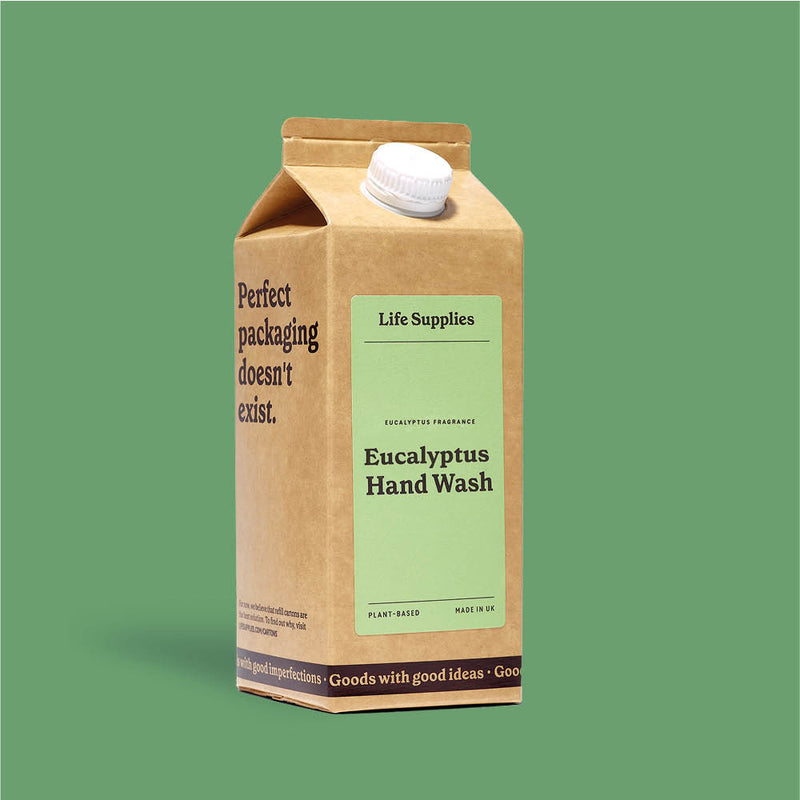Sustainability 26 May 2025
A Rising Tide of Microplastics
Microplastics, or MNPs, meaning micro- and nano-plastics, have been much in the news recently, and awareness and concern are growing among consumers and regulators alike, not only for environmental sustainability but also for human health and food security. Brands must navigate this evolving landscape with proactive strategies to address microplastic contamination and sustainable packaging solutions.
Sevendots, London
5 minute read
A recent analysis, from Nanjing University in China, suggests that microplastics are impeding the ability of plants – crops – to photosynthesise and therefore potentially threaten food supply. This is just one of the latest in a long series of stories on the subject of MSPs, accumulating steadily as they have been found in human blood, in bone marrow, in lungs, kidneys, livers, brains, placentas, breastmilk and more, having crossed critical cell barriers in the body. This is a story of environmental but also of personal pollution.
Most commentators agree on the ubiquity of microplastics. It may be familiar news to readers that they have been discovered at the top of Everest [1] and the bottom of the Mariana trench [2]. They are present in the food and drink we consume as well as the air that we breathe. So, no surprise that it is also generally agreed, it is impossible to evade them.
While there is evidence of harms to other animals, to their fertility and endocrine systems for example, there is less clarity so far on the risk to human health or the exact mechanisms of harm, and issues of causation remain. For example, nano plastics have been shown to have crossed the blood brain barrier and to be at a higher level in dementia sufferers – though researchers could not attribute a causal relationship from their study. [3]
Research studies tend to be small in scale and are often laboratory based. Most conclude that more research and evidence is needed but findings that go well beyond the simple presence of MNPs, and which point to real harms, created in different ways, are mounting.
Last year, the New England Journal of Medicine published a study in which patients with carotid artery plaques in which MNPs were detected were shown to have a significantly higher risk of a composite of heart attack, stroke, or death in the 34 months of follow-up than those in whose plaques MNPs were not detected. The mechanics of this, and therefore causation, were not yet plain. [4]
The recent crop story points to a different harm. If crop yields were reduced by a significant percentage, as it suggests they could be, this would have serious implications for food supply in a context where climate change and soil degradation are already major threats to a still growing population. The conclusions include extrapolations from the data. Previous findings from the Chinese Academy of Agricultural Sciences on the practice of plastic mulching (discussed in National Geographic in 2020 [5]) found that ‘crops grown in soil containing plastic debris have lower yield, height, and root weight’ and that ‘plastic pollution has already decreased cotton yields in China.’

Will consumers care?
Searches on microplastics do not compare with those on other environmental issues, but they are growing. A few years ago, search interest on the topic was confined to South Korea, China and a few North European countries but it has trended steadily upwards at a global level, reaching its highest point of interest (so far) this February. North America and Australia now show some of the highest levels of interest, joining South Korea, China and those Northern European markets already seen.
Many people feel and express concern about the sheer amount of plastic in the environment generally and in their shopping specifically; they want the people they buy from to minimise it. Legislation across the EU is forcing companies to reduce their contribution to the plastic mountains of the world and although not everyone is happy, foresightful businesses have been planning for this.
We are beginning to understand more about the long-term nature of this issue as plastics that are already out there disintegrate into smaller and smaller pieces. As with the carbon we release into the atmosphere, the plastics we use (and throw away) today, will be with us for a long, long time. Meanwhile, they enter the food chain through contamination at source, in processing and from packaging.
Catchy claims that we are all imbibing a credit card’s worth of plastic a week have been largely discredited but MNPs are becoming an issue for consumer and shopper populations. Helpful articles are appearing in the press, such as this article by the New York Times on how to avoid eating microplastics, or this article by the BBC on how to reduce exposure.

What does this mean for brands?
For brands, especially CPG brands, the nature of evidence and debate shifting from general pollution (bad enough but external) to personal health may be critical for trust. Trust in brands has always been important. The very first brand marks were indicators of reliable quality time after time, of trustworthiness. We might trust a brand to keep us physically safe or to keep our data private, to make us look cool or to look after our money. For CPG brands, trust in safety is fundamental. We are already seeing a reaction against ultra processed foods (read more here) and evidence of active avoidance of those foods by large populations [6]. Recent evidence that ultra-processed protein products carry more MNPs than unprocessed ones [7] suggests the two issues may collide.
Packaging is a salient issue for consumers, partly because they have been trained to look at it as an indicator of sustainability. Some brands keen to ride the sustainability trend have leant on their packaging messages, even while other features of their supply chains and lifecycles were less sustainable. So, although this kind of greenwashing is more often called out, packaging remains front of mind.
Packaging is obviously a core part of the MNPs question, in respect of both environmental pollution and the potential contamination of foodstuffs. The answers are not obvious. Alternatives such as glass and metal may be more recyclable, but the associated emissions are high, leading Unilever’s CEO in 2019, Alan Jope, to reject ‘a hysterical move to glass’. Consumer focused refill and reuse schemes have not taken hold at scale; cleaning is a problem, convenience for the end user is always a driver. There is no perfect packaging as this product (a handwash refill from Life Supplies in the UK) proclaims.

So, what now?
As the evidence continues to build, and concern shifts from more general environmental to personal health implications, more brand buyers will likely become uneasy and more will be prepared to try to protect themselves, as they are doing with UPFs. Governments and regulators will take a deeper interest. Some brands and whole categories will come unstuck if they don’t prepare for this, and risk losing consumer trust and market relevance.
There is movement; Apeel is an example of a plant-based technology that avoids the need for protective packaging on fruit, yet keeps it fresh for longer, reducing food waste. Elsewhere, numerous nature-based alternatives to fossil fuel plastics are in development, reflecting a powerful appetite for change.
Some of these alternative plastics may come with different issues in performance or impact but it is clear that new solutions and circular approaches are going to be needed in sourcing, materials, production, usage and reusage, waste management and beyond to prevent the accumulation of MNPs on the land, in the sea and in all of us. Brand owners should proactively examine the role these developments will play in their innovation strategies and partnerships that can support those.
Contact Sevendots today to discover more about CPG industry transformation?
